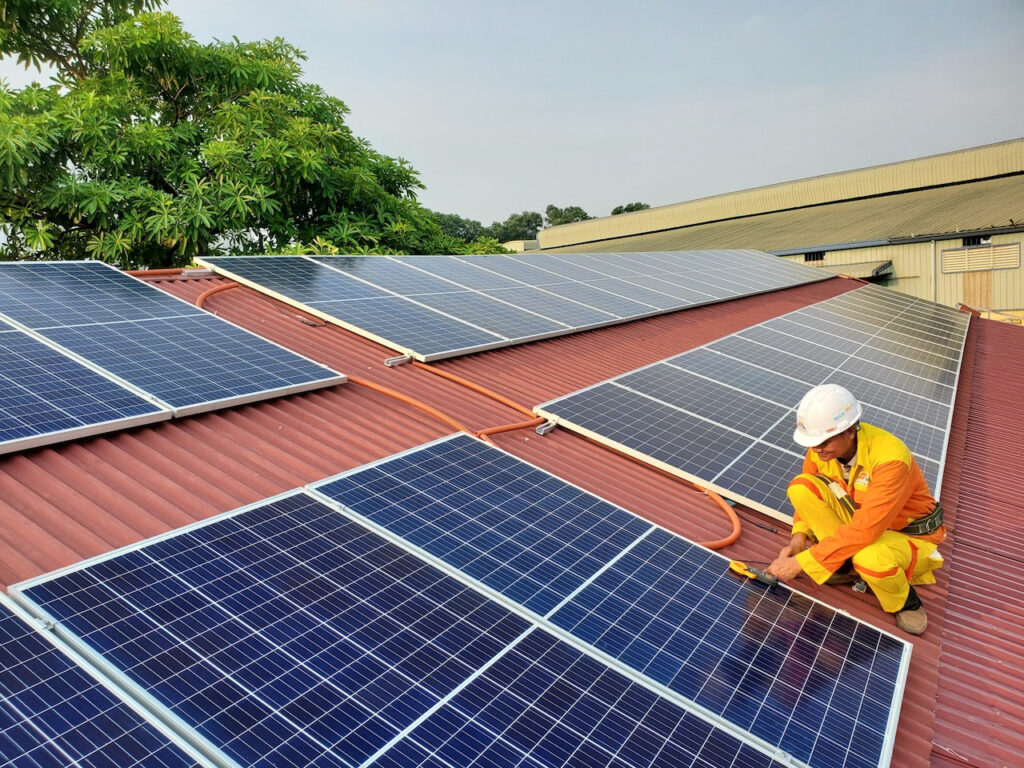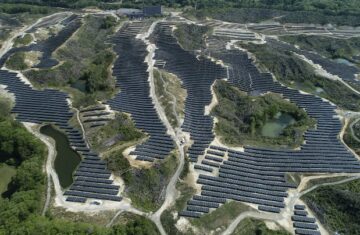Apprentices from the Standing Rock Reservation gain hands-on experience installing solar panels, paving the way for renewable energy in their community.
On an unseasonably hot day in mid-October, three apprentices learning to install solar panels climbed onto the roof of a community building in Wakpala, on the Standing Rock Reservation. Just three weeks into their apprenticeship, they practiced their skills by attaching solar panels to anchor points. By the week’s end, they moved north on Highway 1806 to install a solar array for the small riverside community of Kenel.
Collaborative Efforts for Renewable Energy
These technicians are part of an apprenticeship program run by [Lightspring Solar], in partnership with the [SAGE Development Authority], which focuses on leading renewable energy projects on the reservation. Great Plains tribes are eager to capitalize on the burgeoning clean energy economy and are creating training programs to empower tribal citizens. Rather than competing with the region’s dominant wind industry, some tribal communities are prioritizing solar power programs, reimagining both job sites and utility systems rooted in community ownership.
Hands-On Learning Experience
This was the first time the apprentices had engaged in such work, having applied after seeing social media posts from SAGE Development Authority. Despite facing dusty attics and stray wasps, they agreed that hands-on training outweighed classroom lectures. “It’s a good crew and I’m learning something new,” said Joseph White Mountain III, a former oil and gas worker.
Federal Support for Renewable Energy
Through tax credits, grants, and loan programs, the 2022 Inflation Reduction Act (IRA) provides $369 billion for renewable energy projects and climate change mitigation. The IRA makes funding accessible for various organizations, including local and tribal governments. However, Northern Great Plains states have been notably absent in applying for this funding.
According to Cody Two Bears, executive director of [Indigenized Energy], a nonprofit focused on tribal energy sovereignty, “Native Americans and Native American tribes are going to lead the effort in the next five years” regarding solar development. He emphasizes that program development and workforce training are essential.
Addressing Workforce Needs
The massive federal investments prioritize apprenticeship programs due to the pressing need for skilled workers in the renewable energy sector. Since 2020, solar jobs have grown by more than 5% nationally, yet 40% of non-unionized employers report difficulty in finding qualified workers. Northern Great Plains tribes are taking a grassroots approach to solve this issue, aiming to create resilient energy industries on their reservations.
Solar vs. Wind: A Strategic Shift
Energy is a significant industry in North Dakota, where 14% of the state’s workforce is employed in this sector. While the wind industry has provided about 1,700 jobs and a majority of the $10 billion in capital investments for the state, tribes are looking to expand renewable energy with a focus on solar. Wind projects face barriers such as high upfront costs and complicated agreements for grid connectivity, making solar a more feasible option.

Training for a Sustainable Future
Training programs like those offered by Lightspring Solar aim to help capitalize on the clean energy boom. Joe McNeil Jr., CEO of SAGE Development Corporation, envisions a future where Standing Rock employs tribal members to operate a grid powered by both solar and wind. However, some experts remain skeptical about the current demand for solar energy jobs. Chéri Smith, founder of the Alliance for Tribal Clean Energy, cautions that the lack of state support and incentives may hinder the growth of solar jobs.
A Shift Toward Community Ownership
The apprenticeship program is just the beginning of SAGE Development Corporation’s broader vision. Training community members is crucial to achieving tribal energy sovereignty. “I’m excited to have the opportunity to have someone from here trained professionally,” McNeil said, emphasizing the importance of local expertise.
The six technicians who completed this summer’s installation apprenticeship have promising prospects in the Dakotas. White Mountain, now an independent general contractor, plans to incorporate solar installation into his services. Even during winter, when installation work slows, Lightspring aims to keep staff employed through additional training and certification.
Conclusion
Tribal energy advocates know that developing local workforce skills is essential for the future of renewable energy in the region. By focusing on solar energy, tribes are not only addressing community needs but also reclaiming their energy sovereignty. “We’re able to use these alternative energy resources to give us our power back,” Davis concluded.



